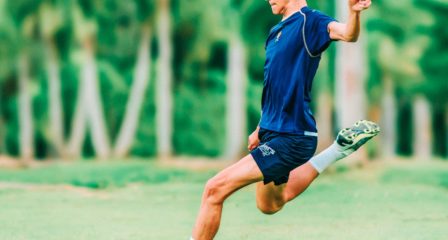For many of us exercise is a form of stress relief and a way to put the day’s worries behind us, in which it is very effective in doing so. Many athletes may find that they train/exercise more during stressful times for this very reason. However, what we sometimes fail to see is how this stress may be impacting on our training, and if it may be contributing further to overall stress levels.
We all live busy lives. We have jobs to perform in, families to give time to, houses to run, social lives and friendships to maintain, the list goes on. Each of these carries with it some level of non-physical stress, which can have significant impacts on our physical health and performance if not adequately addressed. The body responds to all forms of stress in similar ways. We see an increase in hormones such as cortisol, testosterone and adrenaline, all of which alter our physical performance and recovery capacity.
Stress and exercise;
-
May slow / reduce tissue healing by up to 60%
-
May reduce training response
-
Impairs physical performance
Training carries its share of stress, whereas this can be defined as ‘physical stress’. Physical stress is made up of the structural components of our training, and the load demands placed on the body during training. When we exercise we are increasing our body’s overall stress in some way, shape or form.
NON-PHYSICAL STRESS
-
Interrupted sleep / lack of sleep
-
Busy work schedule
-
Illness
-
Significant life event e.g. passing of loved one
PHYSICAL STRESS
-
Training intensity
-
Training volume
-
Running terrain
-
Training frequency
-
Footwear
-
Nutrition / Energy availability
When attempting to manage the impact of stress, the most important consideration is to understand what contributes to increased stress levels, but more importantly ensuring there is minimal crossover with stressors in order to minimize the risk of these manifesting. Injury and/or burnout is most likely to occur when physical stress is being increased whilst already under higher levels of non-physical stress, and visa versa. Therefore, being aware of factors that contribute toward higher stress, and modifying those in which you can control, is important for appropriate overall management.
For example, you have a long training session planned with some fartlek / speed efforts. It has been a busy week at work, and you have had a poor night sleep the night prior to this run. If you decide to continue with this session without modifications, the sleeplessness you are experiencing may mean you are at a lesser capacity to recover and/or perform at the intended exercise intensities. This would mean that the efforts within this session may come at a higher cost than they would if your non-physical stress levels were lower. An appropriate modification may mean that the intended distance of this session is covered at a consistent slower pace, without the added stress of the interval efforts.
WHAT TO LOOK OUT FOR:
-
Plateau / decline in physical performance
-
Taking longer to recover from hard sessions
-
Impaired / interrupted sleep
-
Loss of motivation



